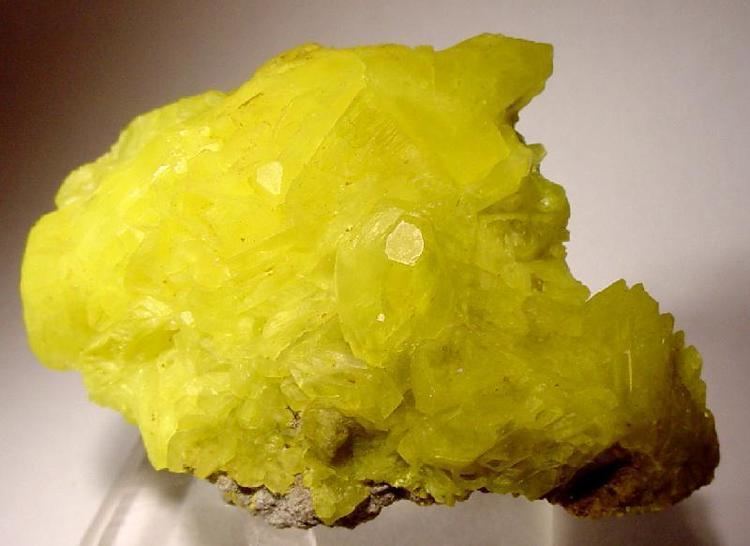Category Carbonate minerals Strunz classification 5.ED.30 Space group R3m | Formula(repeating unit) Na2Ca(UO2)(CO3)3·6H2O Crystal system Trigonal | |
 | ||
Crystal class Hexagonal scalenohedral (3m)H-M symbol: (3 2/m) | ||
Andersonite, Na2Ca(UO2)(CO3)3·6H2O, or hydrated sodium calcium uranyl carbonate is a rare uranium carbonate mineral that was first described in 1948. Named after Charles Alfred Anderson (1902–1990) of the United States Geological Survey, who first described the mineral species, it is found in sandstone-hosted uranium deposits. It has a high vitreous to pearly luster and is fluorescent. Andersonite specimens will usually glow a bright lemon yellow (or green with blue hints depending on the deposit) in ultraviolet light. It is commonly found as translucent small rhombohedral crystals that have angles close to 90 degrees although its crystal system is nominally trigonal. Its Mohs hardness is 2.5, with an average specific gravity of 2.8.
It occurs in the oxidized zone of uranium-bearing polymetallic ore deposits. It also may occur as an efflorescent crust on the walls and timbers of uranium mines. As this mineral is water-soluble, samples must be stored in dry conditions. It occurs with schrockingerite, bayleyite, shwartzite, boltwoodite, liebigite and gypsum.
It was first described in 1948 for an occurrence in the Hillside Mine near Bagdad, Eureka District, Yavapai County, Arizona.
